On 14 October, two years ago, Akkiraju Haragopal became a martyr in Dandakaranya.
We live, we live – we live only for the people.
We die, we die – we die only for the people.
Comrade Akkiraju Haragopal – known to the masses as Ramakrishna – said these words on 11 October 2004 at the Guttikonda Bilam Charu Mazumdar Memorial, before tens of thousands of people, as a solemn pledge to the millions of oppressed across this land. He lived up to that promise until his last breath.
By then, he had already spent twenty-five years in armed revolutionary activity. He built the Nallamala revolutionary movement from the soil and sweat of the people. As a visionary of revolutionary war and peace, he shouldered the historic responsibility of heading the delegation of two revolutionary parties that entered into peace talks with the Government of Andhra Pradesh in 2004.
As a Central Committee member of the Communist Party of India (Maoist), he did not go to the talks to seek favours for himself or for his comrades. “We have not come to ask what you can give us. We have come to ask what you – who took oath on the Constitution and came to power – have done for the people,” he declared to the state. When the peace talks concluded, he moved to the Andhra Odisha Border (AOB) region to build the revolutionary movement there. He successfully led its consolidation and later moved to Bastar, extending his leadership to the revolutionary struggles of Dandakaranya as well.
On this very day, 14 October 2025, Mallojula Venugopal chose to end his own revolutionary life. Venugopal, with his weapon still at his side, surrendered himself before the acolyte of MoSha, (a reference to the Modi–Amit Shah duumvirate) Fadnavis, the neo-Peshwai who embodies Brahminical-fascist tyranny and the corporate greed it serves. According to the Hindu faith, suicide is a sin. So Venugopal chose instead to exist as a living corpse – an empty vessel of betrayal.
For eighteen years he had been a Politburo member, and for twenty-eight long years, a Central Committee member. After the martyrdom of Comrade Azad, he became the Central Committee’s official spokesperson as Abhay. When Comrade Basava Raju (Nambala Keshava Rao) was still alive, on 28 March 2025, he proposed peace talks to the central and state governments. The aged revolutionary warrior Basava Raju knew he had only two or three years left to live, yet he saved young revolutionaries and stood in the thick of battle with thirty-five comrades.
One of the great architects of People’s War in India, Comrade Basava Raju attained martyrdom while confronting the onslaught of Operation Kagaar – dying a hero’s death in the people’s war. But Venugopal? Giving bizarre interpretations to armed struggle, Venugopal surrendered in Gadchiroli with sixty members. He was a master deserter – like a poisoned root corrupting an entire forest – dragging others into the same ignominy. The Chhattisgarh Deputy Chief Minister was quick to announce that Bastar had effectively come under their control when Venugopal staged his spectacle of capitulation before the neo-Peshwai’s representative – Fadnavis of Maharashtra.
We believed that Mallojula Venugopal, who entered Bastar as a fresh sprout with seven cadres and grew from youthful vigour to sixty-three years, had become a mighty tree. As Abhay, he served as the Maoist Party’s spokesperson in Dandakaranya, and we thought of him as a great, sheltering presence. Yet this tree has been torn asunder; its fall and the devastation it brings will remain in the history of the revolutionary movement as a chapter of Droha Kaal- an age of treachery.
We have witnessed the revolutionary ideals of R. K. Where is the immortality of Azad’s revolutionary vision in Venugopal, the one who inherited the Central Committee’s tradition of spokesmanship from Azad? Where, I ask, is the revolutionary legacy in Abhay, who cowardly and cravenly defected, arms in hand?
When Y. S. Rajasekhara Reddy was Chief Minister and Aravind Rao was as Intelligence DIG, Karimnagar district SP Praveen Kumar compelled forty Under Ground Janashakti cadres – in uniform and bearing arms – to surrender in Hyderabad under the leadership of Ranadheer, then district secretary and state committee member of the CPI (ML) Janashakti. This happened in April 2002. Y. S. Rajasekhara Reddy declared with evident certainty that very soon a significant number would likewise surrender from the People’s War Party too. Yet, belying that proclamation, the MCCI and the People’s War Party later announced to the rulers that a single united party, the CPI (Maoist), had emerged, sending shivers down the spines of the oppressors.
It has been the Naxalbari peasant armed struggle tradition: so long as classes exist, class struggle will continue. The highest form of class struggle is armed struggle. This is a Protracted Peoples War that advances the new democratic revolution. For forty-five years, Abhay must have expounded this elemental truth to many ranks. We thought he might merely desert the ranks. We guessed that he might at worst take a decision resembling suicide. But we never imagined he would sink so low as to become a traitor who boosts the counter-revolutionary offensive.
Who gave Mallojula Venugopal the authority to hand over the weapons of the people’s war in Bastar to the enemy in Gadchiroli? Those weapons belong to the people. Whether forged from the sweat and breath of the people or captured from the enemy, they are not his to surrender. He had no right, not even the pretence of a right, to deliver them to the foe. Nor do those who surrendered alongside him possess any legitimacy in doing so.
If he could ignore even the party’s warning, to what depths of temptation had he fallen? What conspiratorial strategy enabled the BJP chief minister, and Fadnavis’s government in particular, to entice those who surrendered with weapons, reducing them to an abasement lower than the DRG or the Salwa Judum?
How many parallels, how many exemplars! October 14th is the day of Renuka’s remembrance- Midco, Damayanthi, Chaitu. Renuka, who entered the revolutionary movement in her eighteenth year and chose full-time revolutionary work, spent nearly twenty years in AOB and Dandakaranya as a propagandist for the movement. More than Sadhana, she became widely known as a skilled writer across the country. Eventually, she was martyred in an encounter. For a month beforehand she had been ill, and an Adivasi woman took her into her home and sheltered her. Her unbending struggle and martyrdom are being sung by the people across Telangana and throughout the country.
How deep must the state’s involvement have been for Mallojula to commit such treachery? Only yesterday, that is on 13th October, all the former revolutionary students raised their voices in unison, in Hyderabad, proclaiming that armed struggle is the highest form of class struggle and that this is not the time to hang up boots.
This betrayal surpasses even Govindareddy’s treachery that happened in December1999. From that act of betrayal- even though three Central Committee members fell as martyrs- wiping one tear and fanning blazing fury with the other, their martyrdom for a year led to the formation of the People’s Liberation Guerrilla Army (PLGA). After the party’s General Secretary- Basava Raju- attained martyrdom, the PLGA commemorated those who fell in the Kagar occupation war during its celebrations.
CPI(Maoist) declared that the people have nothing without a people’s army: the Party, the United Front, and the People’s Army – the three magic weapons held by the revolutionary party. Accordingly, the Party called for formation-week celebrations from 21 to 28 September, and these too were carried out as armed pledges at guerrilla gates, with cultural programmes. In that whole sequence, accompanied by a twenty-two-page letter, Mallojula Venugopal spoke of the state’s nature as semi-feudal, semi-colonial, a rapacious despot. Yet since the Modi government’s rise in 2014, and especially with the Surajkund strategy and the initiation of Operation Kagar on 1 January 2025, he failed to name that state for what it truly is: a Hindu-Brahminical system. Today he prepared to prostrate before that very Brahminical Hindu-fascist government, weapon in hand. How did the rot enter that great tree we had kept faith in? When and how did it begin?
In a letter to his mother, Mallojula Venugopal likened himself and Koteswar Rao (Kishanji) to two Morning stars. Perhaps Kishanji truly was a bright streak on the epic journey from Jagityal’s march, across Dandakaranya, to Jungle Mahal -a grand odyssey culminating in the peace-talks effort, where he fell a martyr in an encounter and, for a moment, shone like a meteor in the firmament.
Today, however, Mallojula Venugopal has crashed like a dying meteor into the bottomless abyss.
I call him a living corpse. At the very place where he came from Bastar to reach Gadchiroli with weapons to defect, lay the dead body of Dandakaranya’s spokesperson, Vilaklp, also known as Katha Ramachandra Reddy. His family fought for human justice, from the Bilaspur High Court to the Supreme Court, struggling for dignified last rites. Ramachandra Reddy’s family is fighting not only on the basis of the Party’s letters but with clear evidence that these were staged encounters, with visual proof of torture wounds on the dead bodies. On the very day after the temporary cessation of armed struggle was announced under the name “Abhay,” statements appeared asserting that Venugopal had no authority to issue such an announcement in Abhay’s name. Announcements were made in the names of both Abhay and Vilaklp.
Ramachandra Reddy’s life in the revolutionary movement, his anonymous existence, his wife Malathi’s prison life, his beginnings as a teacher and a lawyer, and how he entered the revolutionary family, must all have flashed before Venugopal’s eyes. From Jagityal’s march, from Kishtagoud’s memorial unveiling at Kukkalaguduru, from the RYL Kandi Latchireddy bus tragedy where thousands gathered, and in the memorial essay Venugopal himself wrote upon Nizam Venkatesham’s passing, all these reflect the journey of Comrade Kadari Satyanarayana Reddy, known as Kosa Dada. His martyrdom is loftier than the Himalayas. Now we cannot liken the renegade Venugopal’s death, drained of all revolutionary worth, even to a chicken’s feather. There is nothing with which to compare the armed, treasonous suicide of Mallojula. The movement will recover from this blow and rise again. How deep into darkness Venugopal has plunged is scarcely imaginable. Mao, in a letter to Chiang Ching, used the term “abysmal depths” to describe such betrayals.
Chandrasekhar Azad refused to die by the bullet of the enemy. He took his own weapon and shot himself, destroying the weapon so that it would not fall into enemy hands. Venugopal, by contrast, committed political harakiri, handed over his weapon to the enemy, and fled the revolutionary movement.
14th October 25
Published In Vasantha Megham on 17.10.25
*Telugu to English Translation: Narla Ravi
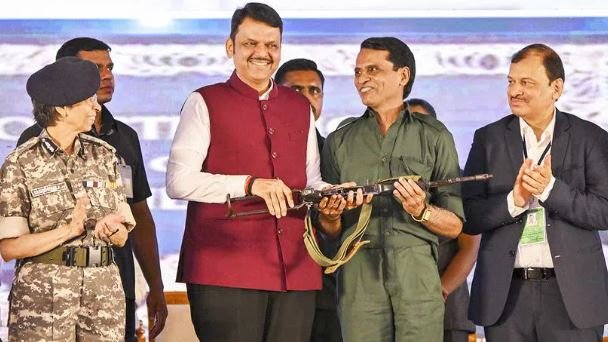
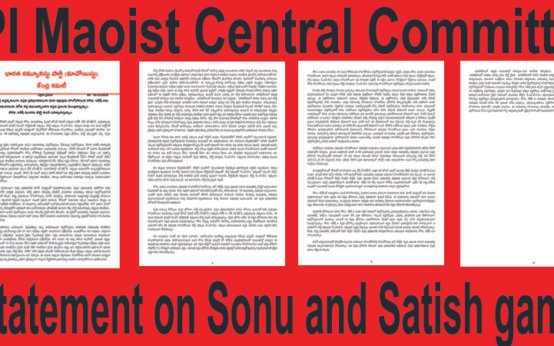 విప్లవ ద్రోహులు,పార్టీ విచ్చిన్నకులు, విప్లవ ప్రతిఘాతకులు -సోను, సతీష్ ముఠాపై మావోయిస్టు పార్టీ కేంద్ర కమిటీ ప్రకటన
విప్లవ ద్రోహులు,పార్టీ విచ్చిన్నకులు, విప్లవ ప్రతిఘాతకులు -సోను, సతీష్ ముఠాపై మావోయిస్టు పార్టీ కేంద్ర కమిటీ ప్రకటన 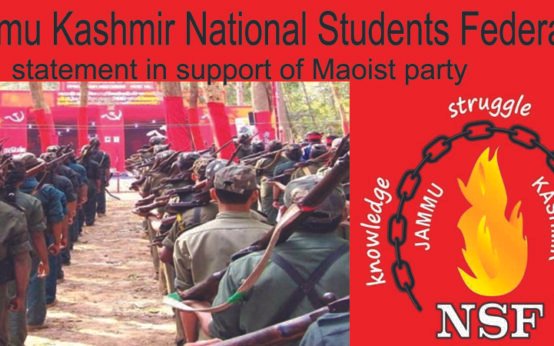 Jammu Kashmir National Students Federation statement in support of Maoist party
Jammu Kashmir National Students Federation statement in support of Maoist party 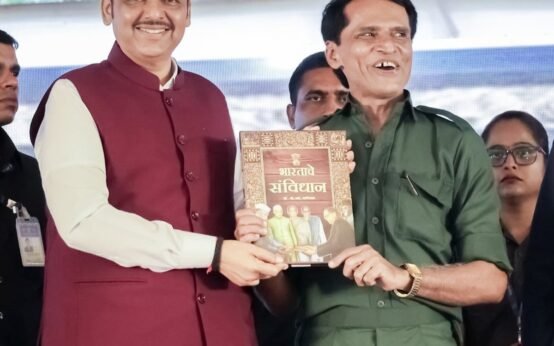 కగార్లో భాగమే ఈ క్రూరమైన నవ్వు – సంఘర్ష్
కగార్లో భాగమే ఈ క్రూరమైన నవ్వు – సంఘర్ష్ 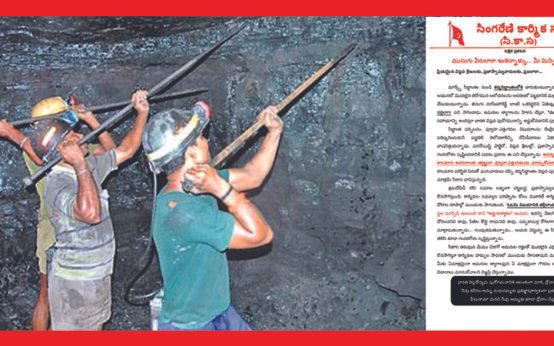 పోరాటం విరమించబోం, పోరుజెండాను మరింత ఎత్తిపడతాం – సికాస ప్రకటన
పోరాటం విరమించబోం, పోరుజెండాను మరింత ఎత్తిపడతాం – సికాస ప్రకటన 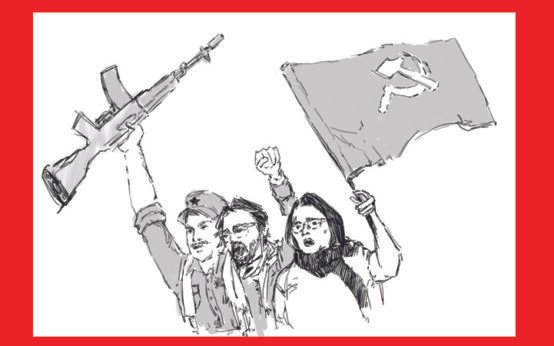 ఆనాటి తాత్కాలి క సాయుధ పోరాట విరమణ: ముందు వెనుకలు -పాణి
ఆనాటి తాత్కాలి క సాయుధ పోరాట విరమణ: ముందు వెనుకలు -పాణి 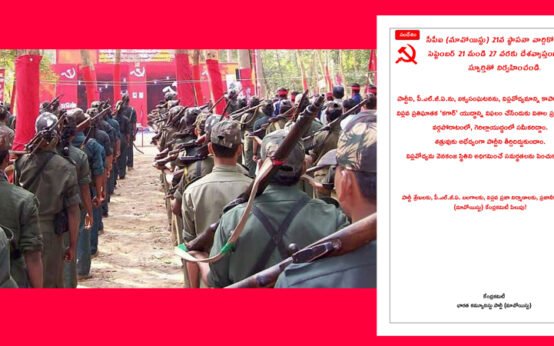 కర్రె గుట్టల్లో అసలు జరిగిందేంటో వివరించిన మావోయిస్టు పార్టీ… పార్టీ 21వ ఆవిర్భావ వారోత్సవాలను నిర్వహించాలని పిలుపు
కర్రె గుట్టల్లో అసలు జరిగిందేంటో వివరించిన మావోయిస్టు పార్టీ… పార్టీ 21వ ఆవిర్భావ వారోత్సవాలను నిర్వహించాలని పిలుపు 